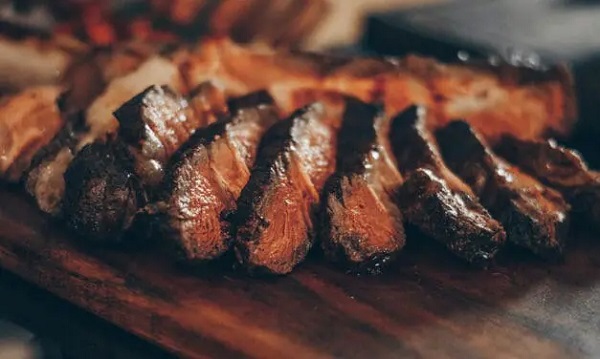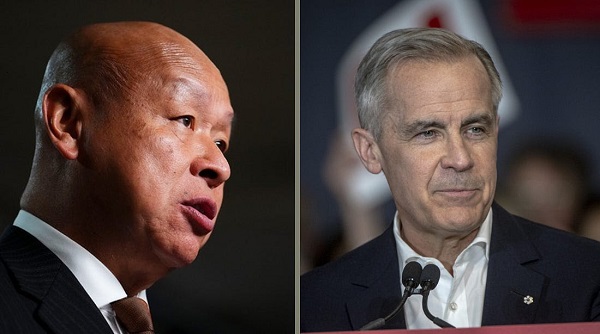Uncategorized
Albertans no longer required to report collisions when damages under $5,000.00

Saving drivers and law enforcement time
Alberta’s government is cutting red tape and saving Albertans time by increasing the property damage collision reporting threshold to $5,000 from $2,000.
To better reflect current vehicle repair costs, effective Jan. 1, drivers will not have to report property damage from a collision to law enforcement unless the cost of the damage is more than $5,000. The new $5,000 threshold was a carefully chosen figure to reduce reporting minor collisions while also making it difficult for fraudulent resales of damaged vehicles.
This change will also free up law enforcement, who are required to commit a significant number of policing resources for processing collision reports. With this change, police officers and administrative staff can spend more time improving public safety.
“Traffic accidents happen. Alberta is saving drivers time and money by not having them report simple fender-benders to the police. Thousands of traffic accident reports clog up our justice system and strains police resources. This is a common-sense change that will benefit drivers and police.”
“We continue to cut red tape by increasing the collision reporting threshold. Waiting in line to file a report is stressful, time-consuming and takes you away from your work and family. This change will alleviate that stress and get you back on the road faster.”
Collisions resulting in injuries and fatalities will continue to be reported regardless of the estimated cost of property damage repairs. Future increases to the collision reporting threshold will be adjusted for inflation based on annual calculations using the Statistics Canada consumer price index, further reducing red tape and time spent by Albertans reporting low dollar value collisions.
“AACP is supportive of increasing the threshold for the reporting of property damage collisions to police. These increases better reflect modern vehicle repair and replacement costs and will result in less minor, non-injury collisions having to be reported to police.”
“This increase to the damage reporting threshold aligns with a resolution Alberta Municipalities members passed at our 2023 convention. We are pleased to see the provincial government take action on this issue.”
The carrier collision reporting threshold will be increased to match the collision reporting threshold of $5,000. Commercial carriers will save time by no longer having to go through an administrative process to eliminate low dollar value property damage collisions from their carrier profile.
“This is excellent news for the transportation mobility industry. We welcome the Alberta government’s move to increase the collision reporting threshold, as it will cut red tape and save time for transportation mobility providers and Alberta consumers.”
Alberta last increased its property damage collision reporting threshold to $2,000 from $1,000 on Jan. 1, 2011, and implemented the commercial carrier reporting threshold ($1,000) in 2009.
Quick facts
- In 2021, there were 89,976 property damage-only collisions reported by law enforcement.
- On average, about 90 per cent of all collisions only involve property damage.
- Data from the Insurance Bureau of Canada shows that in 2022, the average property damage collision claim in Alberta was $6,756.
Business
Beef is becoming a luxury item in Canada

This article supplied by Troy Media.
 By Sylvain Charlebois
By Sylvain Charlebois
Canadian beef prices have surged due to a shrinking cattle herd, high transportation costs, and potential market collusion
With summer weather settling in, Canadians are returning to a familiar ritual—ring up the barbecue. But as they approach the meat counter, many are faced with shockingly high prices. This year, the meat aisle has become a case study in supply-side economics and market dysfunction, leaving
consumers to wonder how this all came to be.
Since January, according to Statistics Canada, beef prices have surged dramatically. Striploin is up 34.2 per cent, top sirloin 33.7 per cent, and rib cuts nearly 12 per cent. Pork rib cuts and chicken breasts have each risen 5.9 per cent, while even meatless burger patties are 6.8 per cent more
expensive. Beef has led the way in these increases, and its dominance in the price hikes is striking. What’s particularly concerning is that it’s not just one cut of beef—virtually every option has seen a dramatic jump, putting pressure on Canadian consumers who were already grappling with rising food costs.
The cause behind these increases lies in Canada’s shrinking beef cow inventory, now at just 3.38 million head—the lowest since 1989. This represents a 1.2 per cent drop from last year, but it signals much more than a cyclical decline. Many cattle producers, facing an increasingly volatile market, are choosing to exit the industry while prices are favourable. Others are opting to reinvest in less risky sectors or even shift entirely to crop production, leaving the beef industry in a precarious state. In short, Canada’s beef industry is retreating, and with that retreat comes rising prices, fewer available cattle, and growing uncertainty.
South of the border, the U.S. is seeing a similar trend, but far less severe. According to the United States Department of Agriculture, the
American beef cow herd declined by just 0.5 per cent to 27.9 million head. This relatively modest drop, coupled with less disruption in their production practices, has resulted in more stable prices.
Over the past year, U.S. boneless sirloin steak rose 5.7 per cent, compared to a staggering 22 per cent in Canada. Ground beef saw a 10.8 per cent increase in the U.S., but 23 per cent in Canada. The price difference between the two countries is stark, and Canadians are feeling the inflationary pressure much more acutely.
There are several factors contributing to the price hikes: Canada’s vast geography, high transportation costs, a limited number of federally licensed beef processors, carbon pricing, and higher labour costs. Carbon pricing, in particular, has added a burden to sectors like beef production, where transportation costs are high. Regulations and logistical inefficiencies add to the costs, driving up prices for retailers and, ultimately, consumers.
This combination of factors is having a compounding effect on the price of beef, making it increasingly out of reach for many.
But there’s another possibility we can’t ignore: potential collusion within the industry. In Canada, a small number of large processors control much of the beef supply, which gives them significant influence over prices. The U.S. government has taken strong action against price-fixing among major meat packers like JBS, Tyson Foods, Cargill, and National Beef, leading to multimillion-dollar settlements. In Canada, however, the Competition Bureau has remained largely silent on similar concerns, allowing the possibility of price-fixing to persist unchecked. Perhaps it’s time for Canada to follow the U.S. lead and ensure the beef industry is held accountable for its actions.
The consequences of these rising costs are already evident. According to IBISWorld, Canadian per capita beef consumption fell by 7.1 per cent in 2023 and is expected to drop another 2.1 per cent in 2024. This isn’t merely a shift in dietary preferences—this is a structural change in consumer behaviour. Beef is becoming increasingly viewed as a luxury item, with many budget-conscious households turning to ground beef as a more affordable option. For many Canadians, beef is no longer a staple food but rather an occasional indulgence, reserved for special occasions or holiday meals.
This shift is unfortunate. Beef remains one of the most natural, sustainable sources of protein available to Canadians. Ranchers and processors have made significant strides in improving environmental stewardship, animal welfare, and food safety, often without recognition. Beef is not only nutritionally dense but also supports rural economies and provides a level of traceability few other protein sources can offer.
For many Canadian families, a summer steak on the grill is becoming more of a splurge than a staple. While Canadians will continue to enjoy beef, the frequency and volume of consumption will likely diminish.
Barbecue season hasn’t disappeared, but for many, it’s starting to look a little different: more sausages, more chicken, and fewer striploins. A shame, really, for a product that offers so much more than just taste.
Dr. Sylvain Charlebois is a Canadian professor and researcher in food distribution and policy. He is senior director of the Agri-Food Analytics Lab at Dalhousie University and co-host of The Food Professor Podcast. He is frequently cited in the media for his insights on food prices, agricultural trends, and the global food supply chain.
Troy Media empowers Canadian community news outlets by providing independent, insightful analysis and commentary. Our mission is to support local media in helping Canadians stay informed and engaged by delivering reliable content that strengthens community connections and deepens understanding across the country.
Uncategorized
Poilievre on 2025 Election Interference – Carney sill hasn’t fired Liberal MP in Chinese election interference scandal

From Conservative Party Communications
“Yes. He must be disqualified. I find it incredible that Mark Carney would allow someone to run for his party that called for a Canadian citizen to be handed over to a foreign government on a bounty, a foreign government that would almost certainly execute that Canadian citizen.
“Think about that for a second. We have a Liberal MP saying that a Canadian citizen should be handed over to a foreign dictatorship to get a bounty so that that citizen could be murdered. And Mark Carney says he should stay on as a candidate. What does that say about whether Mark Carney would protect Canadians?
“Mark Carney is deeply conflicted. Just in November, he went to Beijing and secured a quarter-billion-dollar loan for his company from a state-owned Chinese bank. He’s deeply compromised, and he will never stand up for Canada against any foreign regime. It is another reason why Mr. Carney must show us all his assets, all the money he owes, all the money that his companies owe to foreign hostile regimes. And this story might not be entirely the story of the bounty, and a Liberal MP calling for a Canadian to be handed over for execution to a foreign government might not be something that the everyday Canadian can relate to because it’s so outrageous. But I ask you this, if Mark Carney would allow his Liberal MP to make a comment like this, when would he ever protect Canada or Canadians against foreign hostility?
“He has never put Canada first, and that’s why we cannot have a fourth Liberal term. After the Lost Liberal Decade, our country is a playground for foreign interference. Our economy is weaker than ever before. Our people more divided. We need a change to put Canada first with a new government that will stand up for the security and economy of our citizens and take back control of our destiny. Let’s bring it home.”
-

 conflict2 days ago
conflict2 days agoOne dead, over 60 injured after Iranian missiles pierce Iron Dome
-

 Crime19 hours ago
Crime19 hours agoManhunt on for suspect in shooting deaths of Minnesota House speaker, husband
-

 Business8 hours ago
Business8 hours agoCarney’s European pivot could quietly reshape Canada’s sovereignty
-

 Alberta8 hours ago
Alberta8 hours agoAlberta’s grand bargain with Canada includes a new pipeline to Prince Rupert



